
The kimono is a traditional Japanese garment and the national dress of Japan. The kimono is a wrapped-front garment with square sleeves and a rectangular body, and is worn left side wrapped over right, unless the wearer is deceased. The kimono is traditionally worn with a broad sash, called an obi, and is commonly worn with accessories such as zōri sandals and tabi socks.

Cranes are a family, the Gruidae, of large, long-legged, and long-necked birds in the group Gruiformes. The 15 species of cranes are placed in three genera, Antigone, Balearica, and Grus. Unlike the similar-looking but unrelated herons, cranes fly with necks outstretched, not pulled back. Cranes live on most continents, with the exception of Antarctica and South America.

Sadako Sasaki was a Japanese girl who became a victim of the atomic bombings of Hiroshima and Nagasaki by the United States. She was two years of age when the bombs were dropped and was severely irradiated. She survived for another ten years, becoming one of the most widely known hibakusha—a Japanese term meaning "bomb-affected person". She is remembered through the story of the more than one thousand origami cranes she folded before her death. She died at the age of 12 on October 25, 1955 at the Hiroshima Red Cross Hospital.

Peace Park is a park located in the University District of Seattle, Washington, at the corner of N.E. 40th Street and 9th Avenue N.E., at the northern end of the University Bridge. Its construction was conceived and led by Floyd Schmoe, winner of the 1988 Hiroshima Peace Prize, and dedicated on August 6, 1990. 45 years after the atomic bombing of Hiroshima, it is home to a full-size bronze statue of Sadako Sasaki sculpted by Daryl Smith.

Hibakusha is a word of Japanese origin generally designating the people affected by the atomic bombings of Hiroshima and Nagasaki at the end of World War II.
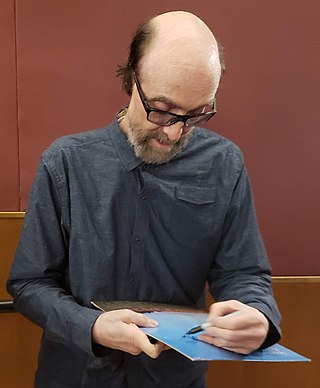
George Otis Winston III was an American pianist who was an established contemporary instrumental music performer. Best known for his solo piano recordings, Winston released his first album in 1972, and came to prominence with his 1980 album Autumn, which was followed in 1982 by Winter into Spring and December, which became a triple-platinum album. A total of 16 solo albums were released, accumulating over 15 million records sold, with the 1994 album Forest earning Winston a Grammy award for Best New Age Album.
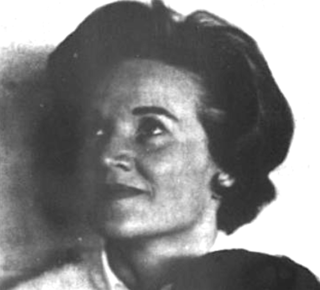
Eleanor Coerr was a Canadian-born American writer of children's books, including Sadako and the Thousand Paper Cranes and many picture books.

Hiroshima Peace Memorial Park is a memorial park in the center of Hiroshima, Japan. It is dedicated to the legacy of Hiroshima as the first city in the world to suffer a nuclear attack at the end of World War II, and to the memories of the bomb's direct and indirect victims. The Hiroshima Peace Memorial Park is visited by more than one million people each year. The park is there in memory of the victims of the nuclear attack on August 6, 1945, in which the United States dropped an atomic bomb on the Japanese city of Hiroshima. The Hiroshima Peace Memorial Park was planned and designed by the Japanese Architect Kenzō Tange at Tange Lab.

"Zhuravli", first performed in 1969, is a famous Russian language song about soldiers who did not come back alive from battles. The song was composed by Yan Frenkel on translation of poem by Rasul Gamzatov and performed by Mark Bernes.
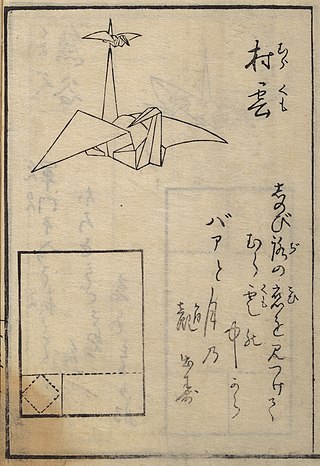
The history of origami followed after the invention of paper and was a result of paper's use in society. In the detailed Japanese classification, origami is divided into stylized ceremonial origami and recreational origami, and only recreational origami is generally recognized as origami. However, this page describes the history of both ceremonial and recreational origami.

The crane is a mystical or holy creature in Japan and is said to live for a thousand years. That is why one thousand origami cranes are made, one for each year. In some stories, it is believed that the cranes must be completed within one year and they must all be made by the person who will make the wish at the end.

The Children's Peace Monument is a monument for peace to commemorate Sadako Sasaki and the thousands of child victims of the atomic bombing of Hiroshima. This monument is located in Hiroshima, Japan. Sadako Sasaki, a young girl, died of leukemia from radiation of the atomic bomb dropped on Hiroshima on 6 August 1945.
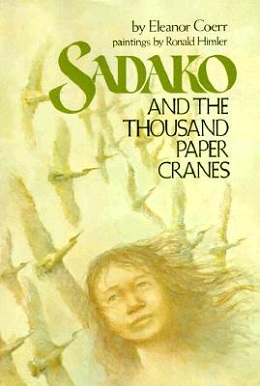
Sadako and the Thousand Paper Cranes is a children's historical novel written by Canadian-American author Eleanor Coerr and published in 1977. It is based on the story of Sadako Sasaki.

Origami paper is used to fold origami, the art of paper folding. The only real requirement of the folding medium is that it must be able to hold a crease, but should ideally also be thinner than regular paper for convenience when multiple folds over the same small paper area are required.
This is a list of cultural products made about the atomic bombings of Hiroshima and Nagasaki. It includes literature, film, music and other art forms.

The orizuru, origami crane or paper crane, is a design that is considered to be the most classic of all Japanese origami. In Japanese culture, it is believed that its wings carry souls up to paradise, and it is a representation of the Japanese red-crowned crane, referred to as the "Honourable Lord Crane" in Japanese culture. It is often used as a ceremonial wrapper or restaurant table decoration. A thousand orizuru strung together is called senbazuru (千羽鶴), meaning "thousand cranes", and it is said that if someone folds a thousand cranes, they are granted one wish.

The Peace Crane Project was founded in 2013 by Sue DiCicco, in order to promote world peace and raise awareness of the International Day of Peace.
Shinto weddings, Shinzen kekkon, began in Japan during the early 20th century, popularized after the marriage of Crown Prince Yoshihito and his bride, Princess Kujo Sadako. The ceremony relies heavily on Shinto themes of purification, and involves ceremonial sake drinking of three cups three times, the nan-nan-san-ku-do. Shinto weddings are in decline. Fewer Japanese people get married, and those who do often choose Western-style chapel ceremonies.
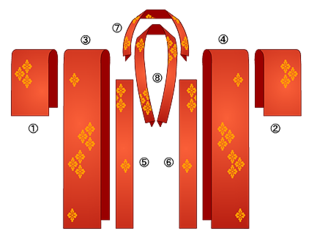
A tanmono is a bolt of traditional Japanese narrow-loomed cloth. It is used to make traditional Japanese clothes, textile room dividers, sails, and other traditional cloth items.

















